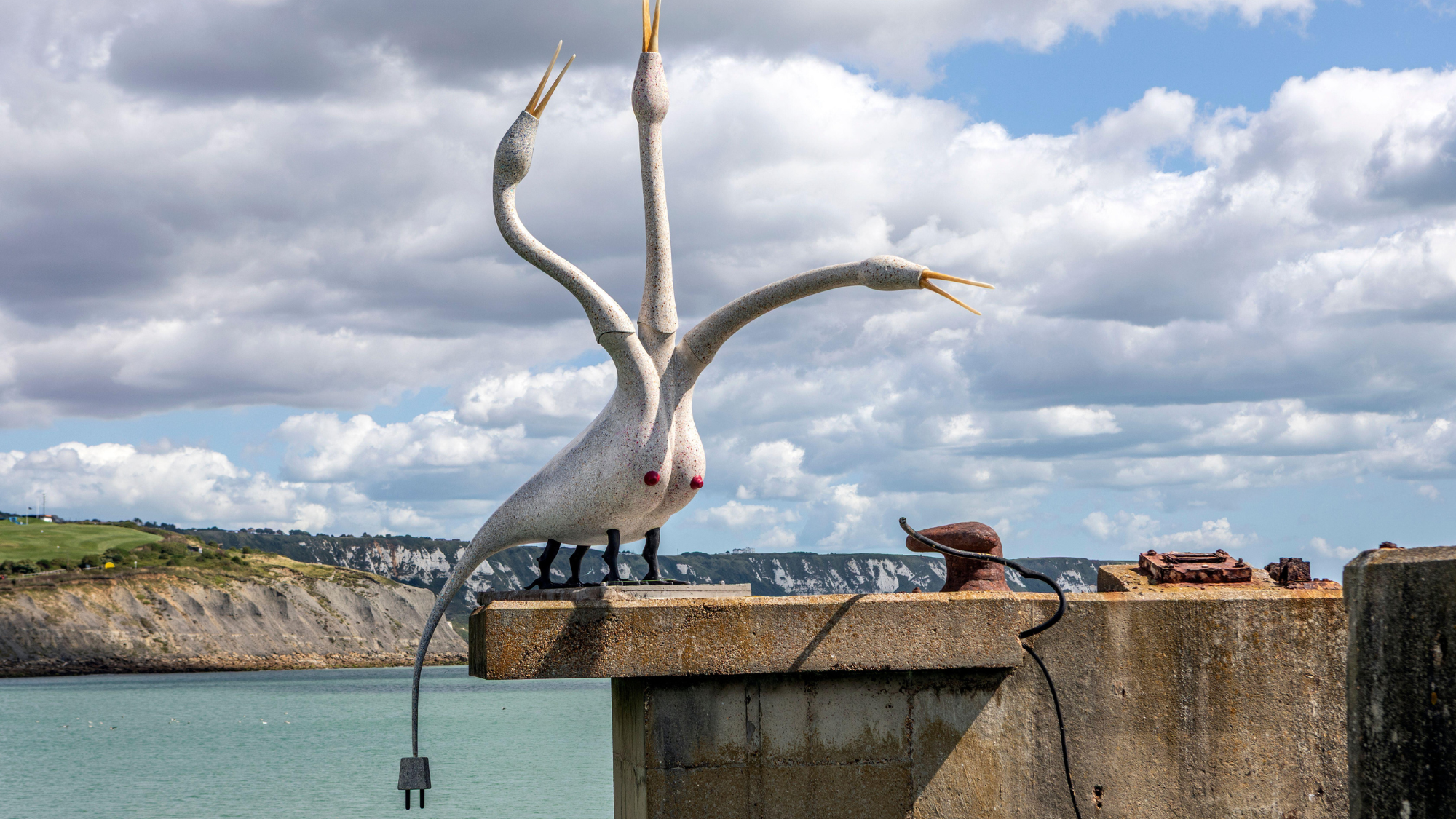Folkestone Triennial – a 'superb' and 'stimulating' exhibition
This 'seaside art trail' is spread out across a bewildering range of 'striking and unusual' locations

Once every three years, the seaside town of Folkestone plays host to a large-scale outdoor festival of contemporary art, said Stuart Maisner on BBC News. The triennial this year consists of work by 18 artists from 15 different countries, which is spread out across a bewildering range of "striking and unusual" locations – from a disused bridge to a former customs house, to a pair of Martello towers built to repel a French invasion in the early 19th century, leading the visitor on an unlikely walking tour through the Kent town.
The event was delayed by a year owing to complications arising from the Covid-19 pandemic – and turns out to have been well worth the wait, said Nancy Durrant in The Times: it is "a triumph". Entitled "How Lies the Land?", it investigates "the ground beneath our feet and the legacies that lie within it" via works ranging from J. Maizlish Mole's "fascinating" map of Folkestone's ruins at the harbour railway station, to Jennifer Tee's "huge" sculpture of a branch of kelp, which is made from bricks and sea glass and embedded in a hillside. The exhibits are usually involving and never less than interesting – it is, in short, an example of "exactly how to do an art festival in a specific location".
There is much to discover on this "seaside art trail", said Jonathan Jones in The Guardian. Some of the pieces are child-friendly – such as Emeka Ogboh's "artist-designed" ice creams, distributed outside a sound installation in a foot tunnel by the harbour; and Monster Chetwynd's giant salamander statue, which is intended as the first part of an adventure playground themed around the creatures.
The Week
Escape your echo chamber. Get the facts behind the news, plus analysis from multiple perspectives.

Sign up for The Week's Free Newsletters
From our morning news briefing to a weekly Good News Newsletter, get the best of The Week delivered directly to your inbox.
From our morning news briefing to a weekly Good News Newsletter, get the best of The Week delivered directly to your inbox.
Others are solemn and thought-provoking. Beneath the pier, for instance, Dorothy Cross has placed a haunting "monument to migrants", in which disembodied feet appear to sprout from "blood-coloured" Syrian marble. It's "superb", and worth a visit in its own right. By contrast, I was "underwhelmed" by Laure Prouvost's sculpture of "a hybrid, three-headed bird" with – for some reason – "a plug dangling from its rear end", said Veronica Simpson in Studio International. While other works seem urgent and relevant, this one just looks silly.
There is much here, though, that is "stimulating", said John Quin on The Quietus. By the harbour, a building that looks like a government office houses a work by the art collective Cooking Sections, which documents the leaks of raw sewage into Britain's waterways. It's humorous, but also serious.
Similarly, there is Emilija Škarnulyte's "scary" but oddly charming film about the decommissioning of a nuclear power plant in her native Lithuania: nobody, it seems, has figured out what to do with the radioactive waste. The triennial combines "extensive research with a treasure hunt enthusiasm". Ultimately, it's "a lot of fun".
Various locations, Folkestone, Kent. Until 19 October
A free daily email with the biggest news stories of the day – and the best features from TheWeek.com
-
 Political cartoons for January 4
Political cartoons for January 4Cartoons Sunday's political cartoons include a resolution to learn a new language, and new names in Hades and on battleships
-
 The ultimate films of 2025 by genre
The ultimate films of 2025 by genreThe Week Recommends From comedies to thrillers, documentaries to animations, 2025 featured some unforgettable film moments
-
 Political cartoons for January 3
Political cartoons for January 3Cartoons Saturday's political cartoons include citizen journalists, self-reflective AI, and Donald Trump's transparency
-
 The ultimate films of 2025 by genre
The ultimate films of 2025 by genreThe Week Recommends From comedies to thrillers, documentaries to animations, 2025 featured some unforgettable film moments
-
 Into the Woods: a ‘hypnotic’ production
Into the Woods: a ‘hypnotic’ productionThe Week Recommends Jordan Fein’s revival of the much-loved Stephen Sondheim musical is ‘sharp, propulsive and often very funny’
-
 The best food books of 2025
The best food books of 2025The Week Recommends From mouthwatering recipes to insightful essays, these colourful books will both inspire and entertain
-
 Art that made the news in 2025
Art that made the news in 2025The Explainer From a short-lived Banksy mural to an Egyptian statue dating back three millennia
-
 Nine best TV shows of the year
Nine best TV shows of the yearThe Week Recommends From Adolescence to Amandaland
-
 Winter holidays in the snow and sun
Winter holidays in the snow and sunThe Week Recommends Escape the dark, cold days with the perfect getaway
-
 The best homes of the year
The best homes of the yearFeature Featuring a former helicopter engine repair workshop in Washington, D.C. and high-rise living in San Francisco
-
 Critics’ choice: The year’s top 10 movies
Critics’ choice: The year’s top 10 moviesFeature ‘One Battle After Another’ and ‘It Was Just an Accident’ stand out